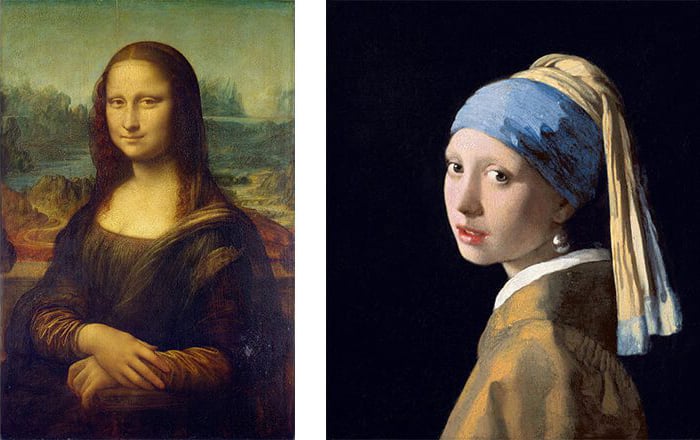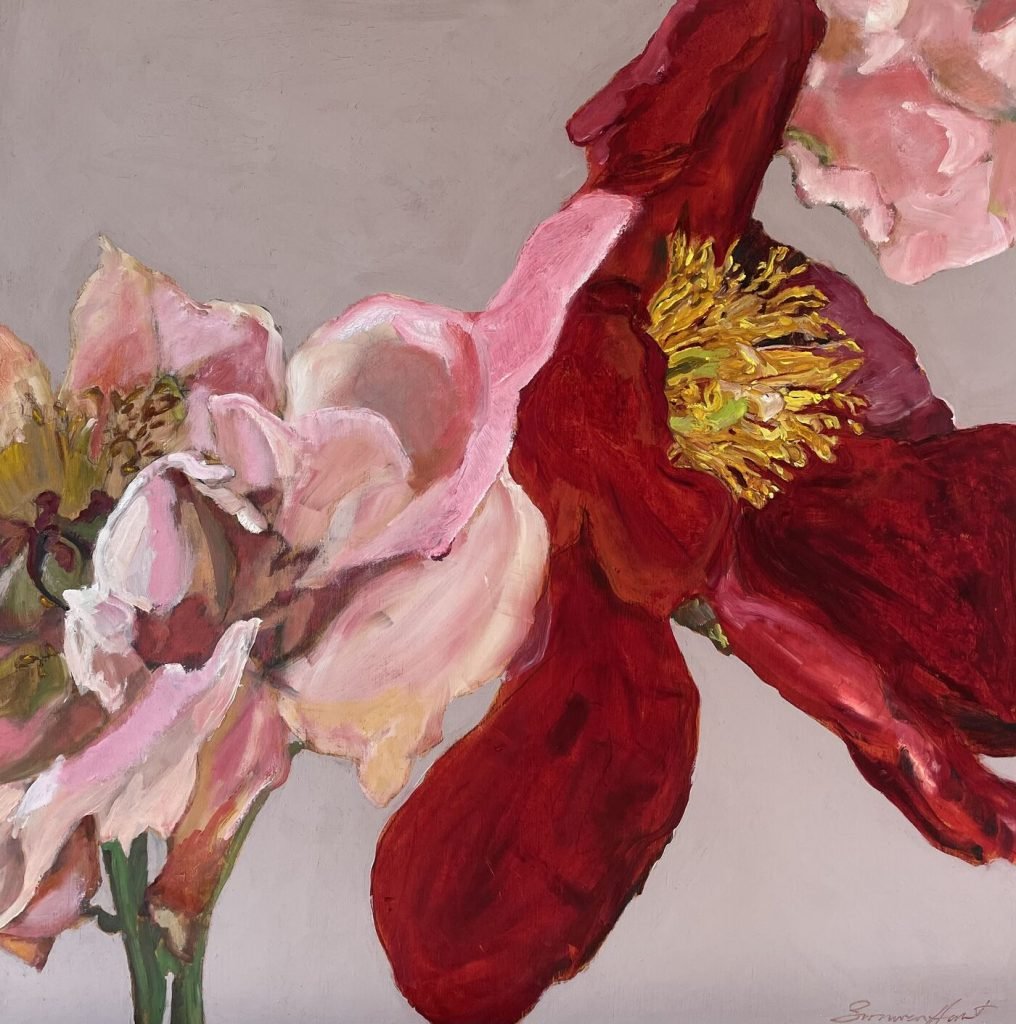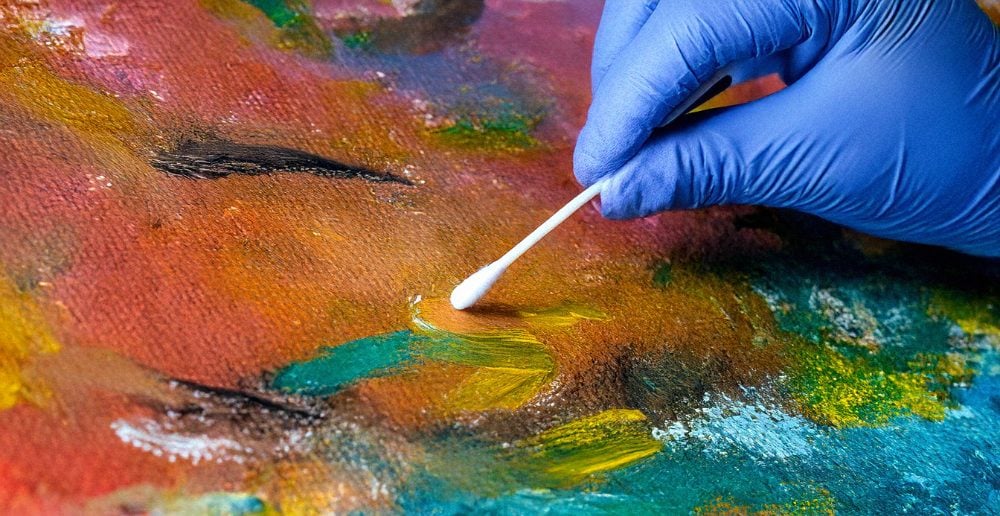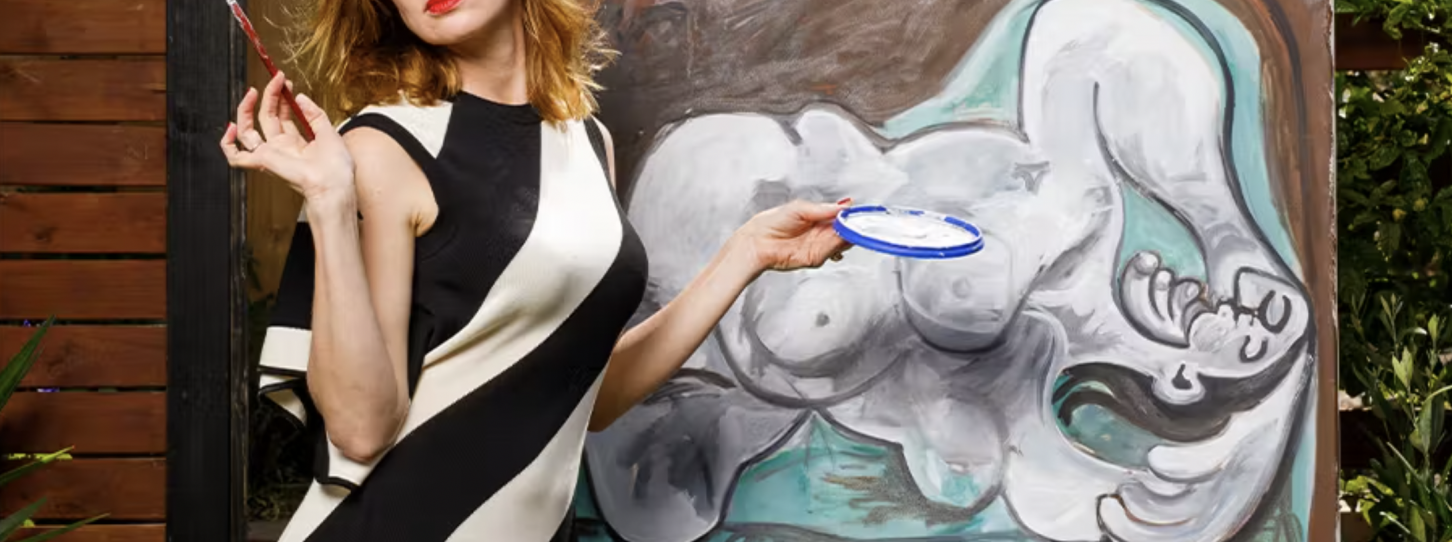How to Clean an Oil Painting
As an art lover and collector, ensuring your oil paintings remain pristine is key to maintaining their value and beauty for years to come. Proper care not only enhances their aesthetic appeal but also ensures their longevity. The good news is that you can clean your oil paintings yourself! Continue reading to discover the essentials of cleaning oil paintings.
What is an oil painting?
An oil painting is a work of art created using pigments mixed with a drying oil, typically linseed oil. This medium allows for rich colours and depth in artistic expression. Oil paintings have a long history dating back centuries, and many famous artworks throughout art history have been created using this medium, namely the Mona Lisa by Leonardo da Vinci and Johannes Vermeer’s Girl with the Pearl Earring, to name a few!

Mona Lisa by Leonardo da Vinci and Girl with the Pearl Earring by Johannes Vermeer. Source: Wikimedia Commons.
Oil paints dry slowly, which gives artists more time to work on their pieces. This slow drying time also allows for blending colours directly on the canvas. The medium can be applied in thin, transparent glazes or thick, impasto layers, allowing for a wide range of textures and effects. These characteristics make oil painting a favoured medium for many artists and art collectors seeking detailed, expressive, and enduring works of art.
What makes cleaning an oil painting difficult?
Dust, dirt, and grime can accumulate on the surface of an oil painting, becoming embedded in the varnish or paint. Removing these without disturbing the paint can be delicate work due to their layered composition and propensity to be damaged by improper cleaning methods or harsh chemicals.

Grace is an original oil painting by Australian artist Bronwen Hunt. Shop her online portfolio today!
Consider before you begin:
Before cleaning an oil painting yourself, you must consider the state of your artwork. Suppose one or more of the below points apply. In that case, it’s best to abandon the DIY approach and seek a professional conservator who uses specialized techniques and materials to ensure the artwork’s safety and preservation. Considerations include:
Age and Condition Before cleaning, assess the painting’s age and condition to tailor your approach accordingly. The paint layer can become brittle over time, especially if the painting is old. This makes the surface susceptible to damage if mishandled during cleaning.
Varnish Layer: Check if the original oil painting has a varnish layer. Many oil paintings are coated with varnish to protect the paint layer and enhance colours. However, over time, varnish can yellow or become dull, but removing or cleaning it requires expertise, as improper handling can damage the underlying paint.
Value and Provenance Consider the painting’s value and provenance before attempting to clean it to avoid potential damage. Even gentle cleaning methods can pose a risk of abrasion, which can dull the painting’s surface or remove delicate details.

I’m God’s Lonely Man, an original oil painting by Collectable Artist Joshua Miels, is rich in texture. This painting technique is called impasto.
How to clean an oil painting yourself:
To clean your oil painting safely, you’ll need to gather the following simple household items and follow the steps outlined below:
Materials:
- Soft cloth (microfiber cloth recommended)
- Distilled water
- Gentle dish soap (ideally olive oil-based, as it’s low in pH). Don’t use anything that contains alcohol, as this could remove some of the paint.
- Optional: Soft brush, cotton buds
Preparation:
- Work in a well-lit, clean area with good ventilation.
- Lay the painting flat (if safe) or secure it on an easel.
- Cover surrounding areas to protect from drips.
The Cleaning Process:
- Dusting: With a soft, clean cloth or brush, gently dust loose dirt particles.
- Cleaning Solution: After removing dust, prepare a mild soapy water solution with cool distilled water.
- Gentle Cleaning: Slightly dampen the cloth in soapy water; do not soak it. Work in small sections, blotting gently to remove dirt and grime from the surface of the painting. Always test a small area first to ensure compatibility. Rinse the cloth frequently and avoid scrubbing. Rough friction will damage the paint and consequently damage your painting.
- Drying: Leave the painting to air dry thoroughly in a well-ventilated area. Avoid direct sunlight, heat sources, and exposure to the elements.

Dust your oil painting with a soft bristled brush to remove surface dirt. Source: International Conservation Services.
When should you call a professional?
Damaged and old oil paintings on canvas may require extra care. If you notice signs of extensive damage (such as cracks or flaking paint), it’s best to engage the help of a professional art restorer. Despite your good intentions, the last thing you want to do is cause irrevocable damage to your oil painting. Art restorers work to stabilize the original artwork and carry out any necessary repairs to preserve the artist’s original vision.
Similarly, consult a professional if you are uncertain about the painting’s age, value, varnish, or heavy grime or if you want peace of mind.

Museum archival quality materials and techniques restore this painting to the artist’s original intention. Source: Baumgartner Fine Art Restoration.
What should you consider before buying an oil painting?
Before purchasing, consider your taste, budget, the purpose, size, style, condition, and authenticity of the painting. Similarly to the thought process when considering bringing home a new pet, ensure you can give your new oil painting the proper care and maintenance required to enjoy a long life displayed on your walls.
Prevention and Maintenance
Maintain your oil paintings with these tips:
- Environment: Maintain a clean, dust-free environment with stable temperature and humidity. That means no displaying art near open fireplaces.
- Regular Dusting: Gently dust the painting every few months.
- Varnishing: Consider varnishing to protect the painting’s surface (consult a professional art restorer for recommendations and proper application).

Still Life With Pears by Anna Speirs is in pristine condition. A simple dusting will keep this painting fresh for years to come! Click the image to shop.
Properly cleaning an oil painting ensures its beauty endures over time, preserving its aesthetic value and cultural, historical, and personal significance. By following these guidelines, you can confidently care for and enjoy your oil paintings for generations to come.
Shop Bluethumb’s collection and discover your next oil painting today!













